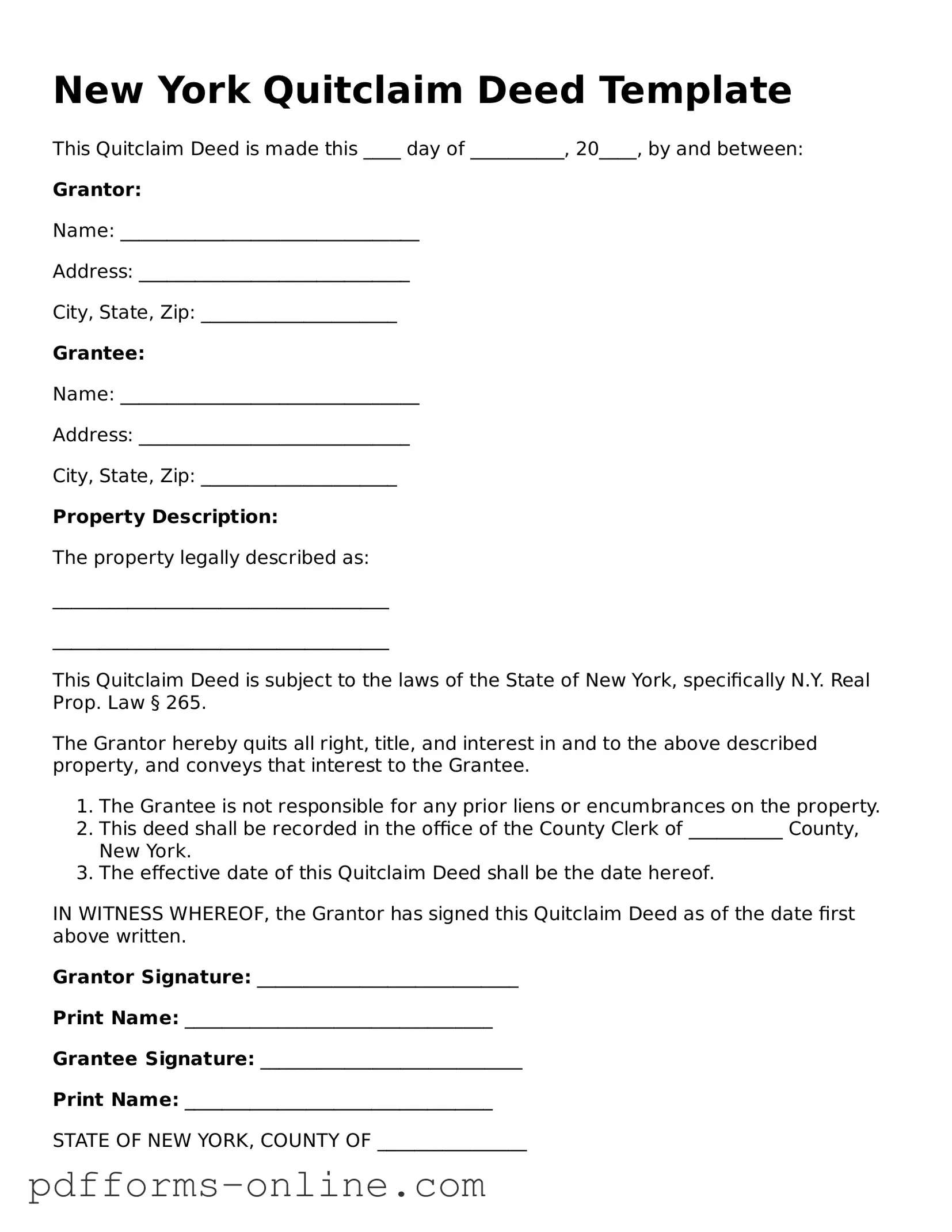New York Quitclaim Deed Template
This Quitclaim Deed is made this ____ day of __________, 20____, by and between:
Grantor:
Name: ________________________________
Address: _____________________________
City, State, Zip: _____________________
Grantee:
Name: ________________________________
Address: _____________________________
City, State, Zip: _____________________
Property Description:
The property legally described as:
____________________________________
____________________________________
This Quitclaim Deed is subject to the laws of the State of New York, specifically N.Y. Real Prop. Law § 265.
The Grantor hereby quits all right, title, and interest in and to the above described property, and conveys that interest to the Grantee.
- The Grantee is not responsible for any prior liens or encumbrances on the property.
- This deed shall be recorded in the office of the County Clerk of __________ County, New York.
- The effective date of this Quitclaim Deed shall be the date hereof.
IN WITNESS WHEREOF, the Grantor has signed this Quitclaim Deed as of the date first above written.
Grantor Signature: ____________________________
Print Name: _________________________________
Grantee Signature: ____________________________
Print Name: _________________________________
STATE OF NEW YORK, COUNTY OF ________________
On this ____ day of __________, 20____, before me, a Notary Public in and for said state, personally appeared ____________________, known to me to be the individual described in, and who executed, the foregoing instrument, and acknowledged that he/she executed the same.
____________________________________
Notary Public
